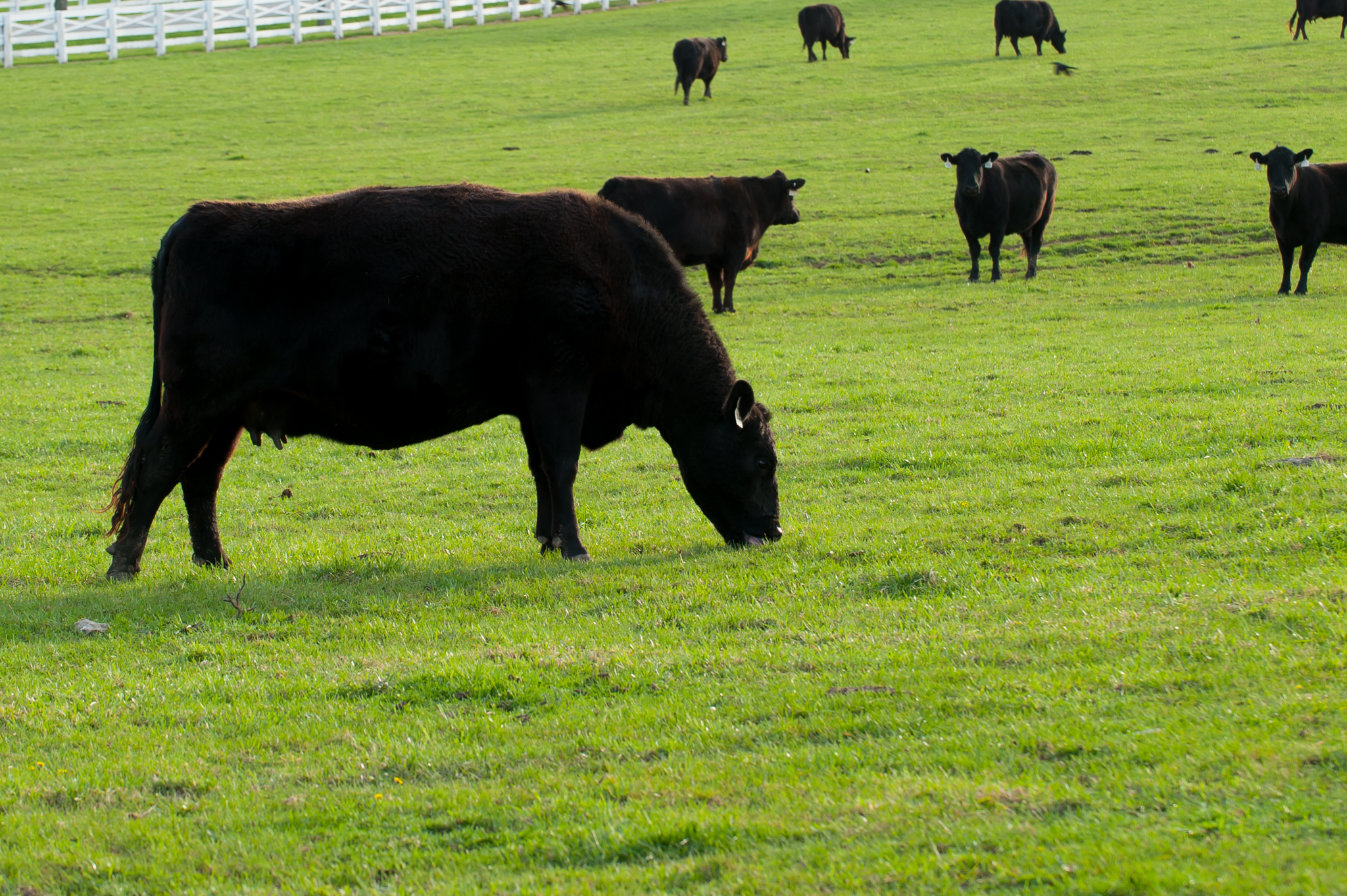Fescue toxicosis can lead to summer slump
Fescue toxicosis can lead to summer slump


Tall fescue is a popular grass for Kentucky pastures for many reasons—it is hardy and tolerates drought, has a root system that aids in controlling erosion and can stand up to heavy grazing. Farmers can even stockpile it for winter grazing. However, an endophyte fungus that commonly infects the plant can affect livestock. Summertime tends to be peak time for fungus-related problems.
“Fescue toxicosis is the general term used for the clinical diseases that can affect cattle consuming endophyte-infected tall fescue,” said Michelle Arnold, ruminant extension veterinarian for the University of Kentucky College of Agriculture, Food and Environment. “Something important for Kentucky producers to watch for is a syndrome frequently referred to as ‘summer slump.’ Affected cattle appear hot with labored respiration (open mouth and/or rapid breathing) and excessive salivation. They avoid grazing during the day and seek shade or mud wallows to find relief from heat.”
Externally, cattle may show poor growth or weight loss, because they aren’t eating as much. They may have a dull, rough hair coat, because they failed to shed their winter coat and have excessive hair growth. They could also have decreased milk production. Internally, they may have narrowing of the arteries which leads to poor blood supply to many body systems, causing increased body temperature, decreased prolactin levels and decreased conception rates.
“Cattle ultimately spend less time grazing and more time hiding in the shade,” Arnold said. “Economically, producers can expect reduced pregnancy rates, longer breed back intervals and lighter calves at weaning. Clinical signs vary depending on the genetic makeup of the cattle, the environmental conditions and the level and duration of the exposure.”
Cattle may show artery narrowing symptoms in as little as two days after initial exposure and may stay constricted for up to six to seven weeks after removal of the animal from infected pasture.
Another syndrome cattle can experience with fescue toxicosis is “fescue foot.” This is basically a dry gangrene of the extremities, usually the hooves. It happens when blood vessels begin to narrow and decrease the blood supply. This is not a prominent syndrome in Kentucky, and it usually occurs in fall or winter with cooler temperatures.
Fat necrosis is a third syndrome resulting from fescue toxicosis. Masses of necrotic fat in the abdomen or pelvic cavities form and obstruct the birth canal, leading to calving difficulty.
Kentucky producers can do several things to improve cattle production on toxic endophyte-infected tall fescue. The seed heads are the most toxic part of the plant. Producers can regularly mow to remove the seed heads or suppress them with an herbicide.
“Removing the seed heads is an effective tool to manage cattle on pasture without having to get rid of an existing stand of tall fescue,” Arnold said. “Rotational grazing is necessary to accommodate the reduced forage production when seed heads are chemically suppressed. You may also need to re-evaluate stocking rates since your cattle will eat more when you mitigate fescue toxicosis.”
Following soil test recommendations for fertilizer and testing tall fescue are important components of pasture management.
Cattle producers with a diverse mixture of forage species in their pastures automatically reduce the impact of fescue, as animals selectively graze other forages. Legumes can improve grass-based forage programs by increasing yield, improving quality, improving summer production and converting atmospheric nitrogen into a form the plant can use, thus reducing the need for applied fertilizer, Arnold said.
A longer-term solution is to replace KY-31 tall fescue with new grass.
“Using tall fescue varieties with a novel or ‘friendly’ endophyte strain that doesn’t produce toxic ergot alkaloids can result in greater average daily gains, lower body temperatures and slick hair coats,” Arnold explained. “These friendly endophyte pastures have slightly decreased carrying capacity but overall greater body weight gain per acre than toxic fescue pastures.”
In Kentucky, novel endophyte varieties have shown more than 10 years of stand survival under good management.
“You will need to carefully manage grazing during periods of slow pasture growth, because cattle will continue to graze these fescue stands ‘into the ground’ without the alkaloid present,” Arnold said. “Endophyte-free varieties are less tolerant to stresses such as drought, low soil fertility and overgrazing, and they rapidly deteriorate without excellent management. Stand life of endophyte-free varieties is similar to orchardgrass. Regardless of variety, you need good grazing management practices for free and novel endophyte tall fescue to persist when grazed in the late spring or summer.”
Arnold said the most effective way to avoid fescue toxicosis is to avoid fescue completely during the most harmful times.
“You can move cattle to warm-season grass pastures or alfalfa during the late spring and early summer, when seed heads are present in the tall fescue stand and cattle are the most vulnerable to severe heat stress and depression in performance,” she said. “Summer annual grasses such as sudangrass, sorghum/sudangrass hybrids, pearl millet and teff are warm-season forage crop options. You can also use alfalfa throughout most of the grazing season, including summer.”
UK Regulatory Services tests samples from Kentucky farms for endophyte levels. More information about sample collection and submission is available by clicking the “seed” tab on their website, http://www.rs.uky.edu.